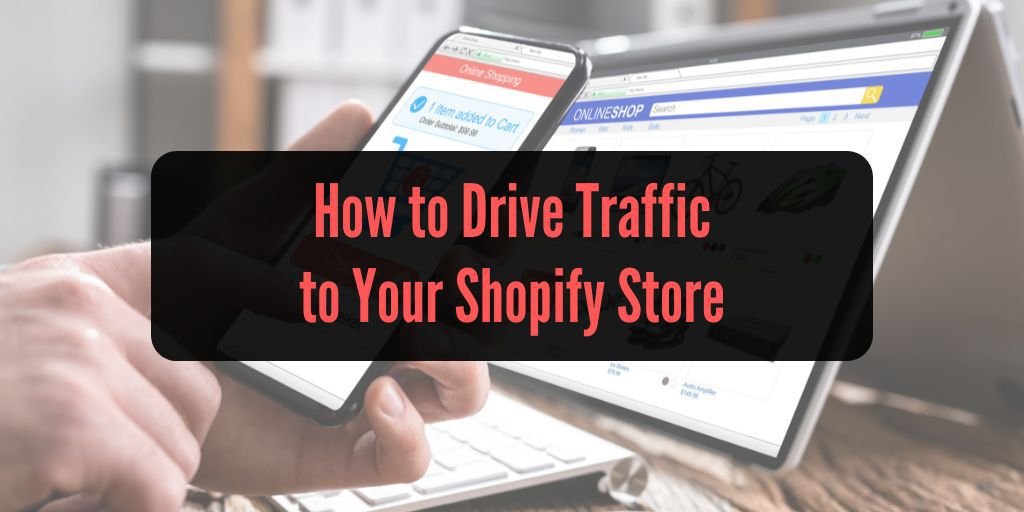If you are planning to build a Shopify store, you need to put in the efforts to drive traffic to the site as well. If you have no visitors, it means your products don’t gain visibility and hence, there is likely to be no sale.
The good news is that there are numerous strategies to help you attract the right audience to your Shopify store. In this article, we’ll explore effective marketing tactics that can help you increase visibility, attract potential customers, and boost sales.
1. Leverage Social Media Marketing
Social media platforms are a goldmine for driving traffic to your Shopify store. With billions of active users across platforms like Instagram, Facebook, Twitter, Pinterest, and TikTok, you can reach a broad audience with the right strategy.
- Instagram & Facebook Ads: Both Instagram and Facebook have highly sophisticated ad targeting tools, allowing you to reach potential customers based on their interests, demographics, and behaviors. Use these platforms to run targeted ad campaigns for your Shopify store.
- Organic Content: Consistently posting engaging content related to your products can help build brand awareness. Share customer testimonials, product showcases, behind-the-scenes footage, and interactive polls to create a community around your brand.
- Influencer Marketing: Partnering with influencers in your niche can bring valuable traffic to your site. Influencers have loyal followers who trust their recommendations, which can result in direct visits and conversions.
- User-Generated Content: Encourage your customers to share their experiences with your products on social media. Reposting this content not only shows off your products but also builds trust with potential buyers.
2. Optimize Your Shopify Store for SEO
SEO (Search Engine Optimization) is one of the most effective long-term strategies for driving free, organic traffic to your Shopify store. By optimizing your website, you increase the chances of showing up in search engine results when potential customers search for relevant keywords.
- Keyword Research: Identify keywords related to your products and target market. Tools like Google Keyword Planner, Ubersuggest, and Ahrefs can help you find high-traffic keywords that are relevant to your niche.
- On-Page SEO: Make sure to optimize your product descriptions, meta titles, and meta descriptions with the keywords you’ve identified. Additionally, use header tags (H1, H2, etc.) to structure your content for better readability and SEO performance.
- Optimizing Images: Shopify stores are often image-heavy, so it’s crucial to optimize your images. Use descriptive filenames and alt texts to ensure your images are discoverable on search engines.
- Improve Site Speed: A slow website can hurt both user experience and SEO rankings. Make sure your store loads quickly by compressing images, using a fast, reliable hosting provider, and minimizing unnecessary apps or scripts.
3. Invest in Google Ads
While organic search traffic is great, sometimes you need a little extra push to get noticed. Google Ads, or pay-per-click (PPC) advertising, is a fast way to get traffic to your Shopify store.
- Search Ads: These ads appear on Google search results when users search for relevant keywords. Target keywords related to your products or services to ensure your ads are seen by people actively searching for what you offer.
- Display Ads: Google’s display network allows you to place banner ads on various websites across the internet. This is great for brand awareness and retargeting visitors who previously visited your store but didn’t make a purchase.
- Remarketing: Google Ads enables you to retarget visitors who have previously interacted with your store. Show ads to users who abandoned their shopping carts or viewed certain product pages, reminding them to complete their purchase.
4. Utilize Email Marketing
Email marketing remains one of the most cost-effective ways to drive repeat traffic and convert leads into loyal customers. Building an email list should be a priority for any Shopify store owner.
- Build Your List: Use tools like Shopify’s email marketing features or third-party apps to collect email addresses. Offer incentives such as a discount or freebie in exchange for signing up.
- Send Regular Newsletters: Keep your subscribers engaged by sending them regular newsletters featuring new products, promotions, and updates. Personalize the emails to make them feel more relevant and engaging.
- Abandoned Cart Emails: Implement automated abandoned cart emails to remind customers who left your store without completing their purchase. Offering a discount or free shipping can incentivize them to return and finalize the sale.
5. Run Contests and Giveaways
Contests and giveaways are a great way to quickly generate buzz around your store and encourage people to visit. By offering a valuable prize and requiring participants to share your store or sign up for your newsletter, you can drive significant traffic.
- Collaborate with Influencers: Partner with influencers to run a giveaway. Their followers will engage with your contest, spreading awareness of your Shopify store and increasing traffic.
- Use Hashtags: On social media platforms, encourage participants to use specific hashtags to enter the contest. This can help expand your reach beyond your current followers and attract new potential customers.
6. Content Marketing & Blogging
Creating high-quality, informative content that is relevant to your target audience can drive organic traffic to your Shopify store. Start a blog on your Shopify store where you write about topics that are related to your products or industry.
- Product Guides: Write comprehensive product guides that educate customers about how to use your products. For example, if you sell beauty products, a guide on “How to Choose the Right Skincare Routine” could attract visitors who are looking for solutions.
- Industry Insights: Share insights about your industry or niche. This positions your brand as an authority and keeps visitors coming back for valuable information.
- SEO for Blogs: Just like with your product pages, optimize your blog posts for SEO. Use long-tail keywords, internal links to product pages, and high-quality images to make your blog content more discoverable.
7. Engage in Affiliate Marketing
Affiliate marketing can be a powerful way to drive traffic to your Shopify store. By partnering with bloggers, influencers, or other content creators, you can incentivize them to promote your products and drive sales.
- Set up an Affiliate Program: Use Shopify apps like Refersion or LeadDyno to create and manage your affiliate program. Offer affiliates a commission for each sale they generate.
- Find Niche Affiliates: Look for affiliates who align with your brand values and target audience. Focus on quality over quantity to ensure the best results.
Conclusion
Driving traffic to your Shopify store requires a combination of strategies. By leveraging social media marketing, optimizing for SEO, investing in ads, and engaging in email marketing, you can significantly boost your store’s visibility and attract more potential customers. Be consistent, track your results, and keep refining your approach to drive long-term growth and success.

